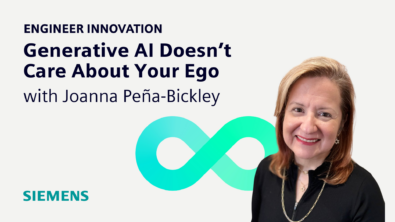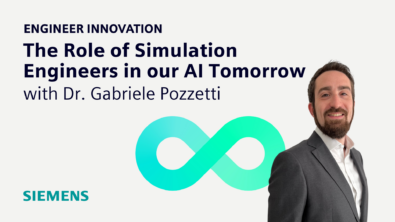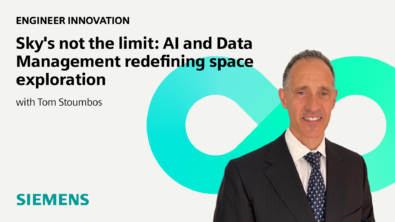Engineering Evolution: Nature-Inspired Solutions
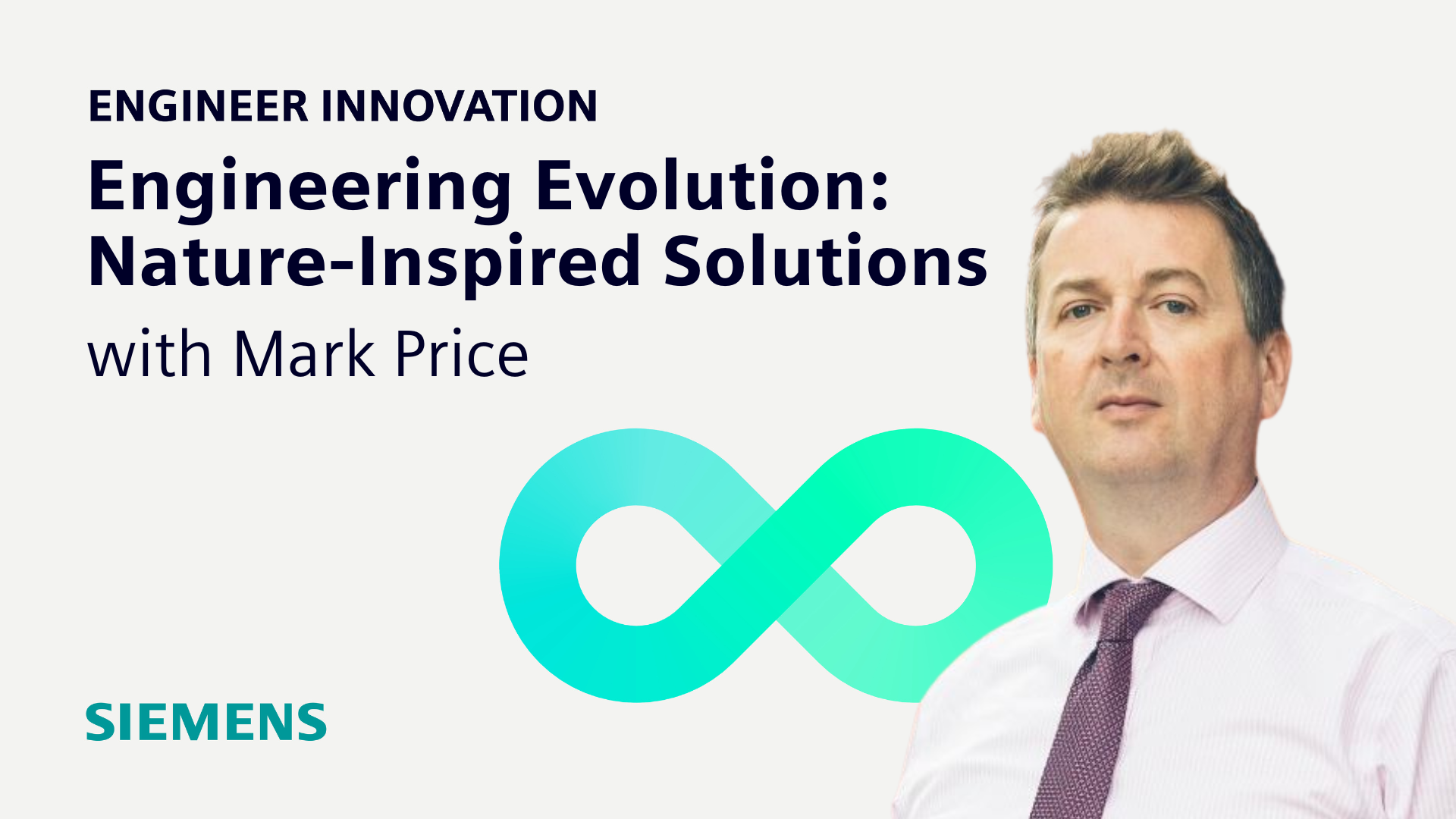
Guest Mark Price
Listen on Apple
Listen on Spotify
Show Notes
In this episode, we look at the intriguing world of bio-inspired design with Mark Price, Professor of Aeronautics at Queen’s University Belfast and Research Initiative Co-Founder at Biohaviour.
Exploring the intersection of nature, engineering and innovation, Mark shares his extensive experience in aeronautics and his research into bio-inspired rules for innovative engineering design. This episode contains significant insights into multidisciplinary problem-solving, the evolution of engineering processes and the integration of nature’s principles into modern design methodologies.
Key Takeaways:
- Computational tools impact evolving engineering practices.
- Bio-inspired design can positively influence innovative engineering solutions.
- The future of engineering design includes bio-inspired and evolutionary principles.
Resources Mentioned:
This episode of the Engineer Innovation podcast is brought to you by Siemens Digital Industries Software — bringing electronics, engineering and manufacturing together to build a better digital future.
If you enjoyed this episode, please leave a 5-star review to help get the word out about the show and subscribe on Apple or Spotify so you never miss an episode.
Watch on YouTube
Guest biographies and episode transcript
- Mark’s work in both industry and academia. (05:01)
- The increasing role of software and computing tools in engineering. (07:56)
- Adapting engineering processes to current global challenges. (08:43)
- Bio-inspired rules for engineering design. (13:38)
- Natural systems’ problem-solving methods for engineering innovation. (14:25)
- The “In Search of Design Genes” project — goals and discoveries. (20:03)
- Maintaining design flexibility and avoiding early design freezes. (22:54)
- AI’s potential to revolutionize engineering design processes. (37:02)
Mark Price:
What we’ve been able to establish, and following nature, if you want to understand design innovation and how things change, then don’t design the final form of the project of the component. You let it emerge, which means it’s a bit uncomfortable at times, so you need to bring risk into that.
Speaker 2:
Hi, Chad. This episode is an interview with Mark Price. What did you find out from Mark?
Chad Ghalamzan:
Mark is a professor at Queen’s University in Belfast, and he’s involved in a very unique research project. He’s looking at bio-inspired roles for design engineering. So, basically, taking from nature, learning from there and how we can apply that to rethink the entire design process. So this is a very high-level conversation about how we should approach the whole process of rolling out any type of product. He specializes in aeronautics, but really anything that we go from design to manufacturing to end of life, how do we rethink that whole process in a more organic way?
Speaker 2:
Is he an engineer or is he somebody from a biomedical?
Chad Ghalamzan:
No, actually, that’s what I asked him. Bio-inspired, people are going to think it’s medical, but this is not about medical or health at all. He is an engineer. He’s a professor now, but he does have experience working for several different companies. So he’s coming in with that knowledge and understanding of how things work in the commercial world and the real world to some extent. But now, in academia, he has the freedom to explore these concepts, and really, he’s done several research projects to try and find these, “design genes,” as he calls it, to see if there’s a natural way engineering projects should unfold.
Speaker 2:
And so there’s a lot of evolution in that concept as well?
Chad Ghalamzan:
He makes the project names and everything, there is a lot of references to evolutionary theory and such and how that was developed, and some of his project titles, he takes inspiration from those. And I asked him, you know, was Leonardo da Vinci an inspiration, because he’s also famously known for looking to nature for some of his inspiration. But it is fascinating to hear his rationale for doing this and what was his inspiration.
Speaker 2:
Great. Let’s have a listen to the podcast.
Chad Ghalamzan:
Hello, and welcome to the Engineer Innovation podcast. I’m Chad Ghalamzan. Today, I’m joined by Mark Price, professor of aeronautics at Queen’s University Belfast. He’s here today to talk about bio-inspired rules for innovative engineering design. Mark, why don’t you introduce yourself to our listeners first.
Mark Price:
Thanks, Chad. It’s lovely to be here and have the opportunity to talk about interesting things. So I’m a professor of aeronautics, as you say, at Queen’s here. I spent all my life in the aeronautics and engineering domain focusing largely around design. I did at one point of my career there I was on our university executive board as a pro vice chancellor here. It’s dean, I believe, in the US and North America. And as I moved through my career, just the design world became more and more interesting, and now that I’m through the rigors of a career, I’m really focused on developing new methods and approaches for engineering design.
Chad Ghalamzan:
So you have a background that also, I think, has some commercial experience as well. You weren’t just in academia your whole career?
Mark Price:
Absolutely not. When I first graduated, I joined an aircraft company. It was short at the time and then was taken over by a Canadian company, Bombardier, and it’s now currently owned by Spirit AeroSystems. And I started my life as a stress engineer just learning the practicalities of structural design of aircraft. And I then was very excited by CAE technology, which was just emerging at the time. It was CADs 4 was a big thing for those of you that are remember way back then, and we started to develop mesh generation techniques to try and help us undertake the structural design better for finite element methods. That got me really interested, and so, I left industry and went back to university to do a PhD in computerated design, in particular on mesh generation methods. And I then went and worked in a company, they are now owned by on CAE development.
We had a product there, which is still going very strong, called CADfix. It was all about how you clean up geometry and use geometry in a more practical way for design. And after that, actually I almost, I went into the financial industry for a while, and I worked there, just applying some technical skills to that, but eventually decided that, really, I wanted to think more deeply about the kind of problems and challenges we face. And so, I turned to academia then and joined academia slightly later in my career than would be typical certainly in the UK. It allowed me then, of course, to start to follow a path of solving problems that we think would be useful.
Chad Ghalamzan:
You came back to the good side. You left the dark side. Or maybe that you came to the dark side, I don’t know. It depends.
Mark Price:
Fulfilled but poor.
Chad Ghalamzan:
A new paradigm and a new design rules is what your research is currently focused on. But before we jump into that, I think it would be useful maybe to get your take on how you would describe the current way design is approached. So, to understand your view on the way most people approach engineering design in its current form?
Mark Price:
It’s a good place to start, actually, because it’s the rate of much of the interest. And it’s very interesting when you go and look at the scale and scope and complexity of both products and organizations and the systems that they produce. It’s actually different for them all. So, large scale OEMs, original equipment manufacturers, the really big organizations are dealing with multinational companies and very complex supply chains. The other end of the scale you get bespoke technical companies that are making smaller products with a rapid turnaround. And I find it very interesting because the machines we now make are amazing, and aircraft is my main interest and has been much of my life, although I’m interested in much of technology. But there are some of the most amazing machines on the planet. And to make that work and to understand and to deliver products that are safe for us to use and will last for a long time.
We have complex systems, and, in particular, the nicest example of that I think is systems engineering that allows you to guide you through a process that breaks the problem down until it’s a tractable form. And then, of course, there are verification and validation processes as you build the product up and it de-risks it so that when you have the product rolling out your door that it’s really fit for use, and it’s safe, and you know it’s reliable. And that has really enabled us to think to do things beyond what most people in society really would understand if they peel back the layers of a car or a television or an airplane. And I think that’s both the brilliance of it, but we’re now entering a world where things are changing very rapidly, and we have seen over the years the increasing role of software and computing tools and helping us do many things.
And they have a very different approach to development, which is more agile. It’s more organic in some ways, and all of these now in a mix make this a very interesting domain. And in particular, I think the challenge we have is how we adapt those current processes we have. They’ve got us so far, but what’s our next step in dealing with these really complex supply chains that get interrupted by all kinds of issues and supply? And, of course, we have climate change, where we really need to understand in a different way how to measure our designs. It’s no longer only cost —
Chad Ghalamzan:
Yeah, the metric. Yeah.
Mark Price:
Yeah, yeah, yeah, and we need to look at things differently if we’re going to adapt to that and to do things quickly enough to address this major challenge.
Chad Ghalamzan:
Is it that these things were all disjointed before, and now they’re no longer allowed to be as disjointed, and you’re trying to bring together a complex system of systems? Like when you mentioned aircraft, those are highly complex. They’re probably the most complex engineering problems that are being tackled because there’s so many systems, so many different design criterias. Is it the fact that previously they were disjointed, but now, with the tools and the capabilities, they are no longer allowed or shouldn’t be disjointed, and bringing them all together without some new rules is leading to complications?
Mark Price:
It’s a little bit of both. And I think that’s one of the things that makes it a very interesting challenge. There were, and remain there are, connections between things because the system has evolved, it’s tightly controlled to ensure that things happen. So you have an integrated product team at the start, it helps you define the overall concept and bring it through and then details are developed and so on. So there are connections, but what I think is happening now is the pace is changing and then the demands are changing. Then we have been able to understand more and more about this, and we see where it would be better to connect it in different ways. But because you’re looking to connect things in different ways and try to bring in particular some of these, I suppose it would be further down the chain and time and bring them earlier in the process to enable you to make those decisions.
For example, to get a product certified, we’re now realizing that many of the certification processes happened downstream, but if you knew all of the bumps in the road early and the design, you could accommodate those. And if we’re to get new products out quickly enough with new technologies, then we want to be adapting those and also helping the regulatory and certification authorities themselves understand what’s coming and how they may get it, binding the guidelines into a good form that will guide companies to produce safe and reliable products. It’s a little bit of both. There are some disconnects in that because of the complexity, but there’s also just the simple fact that the world is changing, and we need to understand our systems in a different way.
Chad Ghalamzan:
Is there anything that personally you wanted to correct, or what was your driver to try to address the flaws in the system?
Mark Price:
Personally, I guess coming to the technology at a point in my career where computational tools were just coming out and we were beginning to see the value of those. And then, once I really started to do research and we were understanding the reality gap, really, between what you test and what you physically understand and what you’re designing, personally, I just started to see the power of a different approach and different thought process that you could capitalize on the great value. We have amazing engineers in the worldwide community. We are a global community of people who want to do good things for themselves, for their companies, for their countries, for the whole of humanity.
And I started, I guess for me, it was about helping people put their creativity and their ingenuity and getting the solutions quickly as opposed to having to spend time getting models just right and getting the understanding just right. So the more we could draw these things together and get the information back, it would allow a almost autonomous system where the human is the person is interacting with a system to get the best value solution for us out of it.
Chad Ghalamzan:
Not just spending your time more efficiently but being more productive?
Mark Price:
Yeah, I guess it perhaps comes from you. I haven’t started my career thinking about just simply how do you break a geometry up to get a tetrahedral mesh that you could analyze it. Trying to jump from that to really say, “Hold on a minute, that’s not the key problem. The key problem is, what is this thing in front of me doing?”
Chad Ghalamzan:
Right. We get focused on making the tools work and less about what the solution we’re trying to actually drive towards.
Mark Price:
Yeah, true.
Chad Ghalamzan:
It’s very inspiring, and it’s nice to see that you’re rethinking the paradigm. So, I’m going to quote something I read from your website which talks about your research project: “Bio-inspired rules for engineering design.” Maybe you can unpack that for us because bio may give the wrong signal here for some listeners that its health or natural, but this is something inspired by nature but not natural. Maybe you can unpack that sentence for us. “Bio-inspired rules for engineering design.” What’s your bio inspiration?
Mark Price:
It sits at the core of our ethos and spirit, and it’s really, there’s a lot of work going on in both science and engineering and biomimicry. And most people tend to think, as you say, either it’s about agri food type things or cellular things or whatever. But if you move into the engineering domain and you talk about say reproducing shark-skin-type materials for wetsuits or for skiers, and there’s a physical, functional thing to that, we’ve actually looked much more deeply, and what we’re really most interested is the way nature or natural systems solve problems. It’s taking inspiration on how that approach works. So, for example, we talk about multidisciplinary problems in engineering all the time, but if you look at a plant in anyone’s backyard or in the fields, the plant is receiving signals in pressure from wind load, internal pressure. It has thermal temperatures. It’s expanding. It’s a physical thing, like all materials.
So natural living things are responding and solving multidisciplinary problems all the time. And there are other mechanisms that they respond to that dictate their shape and form. So we really step back at one point, having observed these types of things and start to say, “Okay, well, what would a natural system do, and how would it grow to respond to that?” And it will thicken here, will get thinner here, will be flat. It’ll take energy in. It’ll release energy. And when you look at that, you start to understand, or at least I did, this is about how you respond to something. It’s not about how you, say necessarily the final shape or formula. And the way I had been trained, and the way I believe most engineers are trained globally today, we often think about getting that final shape or form correct and then understanding that. Whereas in natural systems it’s about the response to the given input or stimulus.
Chad Ghalamzan:
To use your example, the shark skin, instead of just mimicking the skin on a different form, you want to understand how did the shark skin become that way? What was the process maybe that evolved for the shark skin to be that way because that was the most effective way to deal with the design problem of a “shark being in deep water.” So it’s understanding that process.
Mark Price:
Yes, exactly.
Chad Ghalamzan:
So go a bit more than skin deep?
Mark Price:
It’s a nice analogy. Yes.
Chad Ghalamzan:
Okay, this is the bio-inspired using kind of nature and this is, da Vinci, was he a tangential influence here? Because he’s often cited as someone that used nature as his inspiration. Was that ever in your mind that you’re mimicking his approach to solving some problems? There’s a lot of influence from nature in your text when you read the wording.
Mark Price:
Absolutely, because we discovered very early… he did a lovely thing at one point where he was drawing trees and studies, and he made the observation that as you go up the tree and you slice it at any point past any of the junctions, that if you sum up all the areas, they will always be the same. And they’re always the same as the trunk. And, of course, that’s just a transport problem. So, it was those kinds of observations that really made you, well, made me think about things as well. And the other inspiration I have is my wife is a gardener, and she’s always playing in the garden and doing things, and you start looking at, wow, if you cut this off here, it grows here, if band this here, it moves here.
When you start that mode of thinking, I think it’s like a snowball. It really gathers momentum because you look at everything very differently, and da Vinci is not the only one, but we look at all of those, and we look at certainly all of the Darwinian-type approaches to thing and all the others — Manasse, Lamarck — all these amazing minds who observed things and why things were taking shape and form. And, of course, they’re trying to understand an existing system, whereas we’re trying to say, “Well, what would drive that?” And it really challenges you to think about if you take a human and a horse, they’re great things to put together. We have the same skeletal structure, but, of course, the horses run on just their middle finger of their hand and that has grown, and the others have shrunk away.
You start to think, well, what’s driving the growth? So as an engineer you think, okay, there’s a structural load in there because it’s speeding up, and that load clearly leads it to develop strength in one place, and then the load powers drive the rest of the form. So you start to look at things in a different way, perhaps not even necessarily like a biologist, but I’m always translating it into a form that I understand, which is good old equilibrium energy on those kinds of things.
Chad Ghalamzan:
It’s good to have that relationship because it takes the philosophy of what you’re talking about and brings it into a concrete understanding of physics and science, which is obviously behind what’s happening in engineering. I guess, this leads to my next question because a lot of what you’ve talked about is peppered with words like “natural” and “bio” and such. So your first project was in search of design genes, which again, you’re bringing in a very nature or deterministic from evolution understanding to how engineering problems maybe evolved. So this was a project that you started to answer these questions. What was the goal in search of design genes project?
Mark Price:
So, it was our first properly funded piece of work, and it was really interesting because to be honest, Chad, our goal there was to see, are there any rules that would drive this? So, we grew up in the engineering world, and as we further advance in our training, we’ve got theories that guide us to say that certain things are a certain way that follow these rules. So I’ll be this thick, and it’ll be this shape or whatever. And what we wanted to do was to say, is there anything underneath that that starts to really link the environment that your product is in that drives it? So, in the existing systems engineering type process, you have requirements, you get a breakdown of the requirements, you start to then work out the functions that will satisfy that, and you build in a product architecture underneath that and so on.
We wanted to see were there any rules that say, given that you’ve got this type of input, what would the response of the structure be if you just grow it from a point? So you don’t know that it’s going to be thin and flat like a plate or long and thin like a beam or squat with holes in it, but just what would make it start to be flat like a plate or long and thin or what would make it have holes that you would build it? So we were looking for that, and we really just got as far as identifying that if you put key elements in the environment, and you could feed that in to the structure that you could get responses happening. And there was one other major bit for me really stuck out in this, and that living things are always growing.
So I would really love to get biologists on board, particularly evolutionary biologists. Their scientific truth lies deep, and they go deep in particular areas. But I did have a conversation with one. He said, “It’s chaos out there, and it’s war all the time. But if you give plants and so on the right conditions and the right… You know, enough food and so on, they will just keep growing and growing.” And it really made me think, we do lots of design freezes. You get on, once some part of your system works, you go, “That’s good, let’s move on.” So because it’s hard enough solving what we have to solve. So one of the things that really emerged out of that is that we keep every bit of the design alive as long as possible and changeable as long as possible.
Chad Ghalamzan:
So get out of design fixations. Gt out of this tunnel vision.
Mark Price:
A little bit of that, and simply but a little bit of don’t close down any avenue. So it’s a bit like set-based design. We want to keep as much open for as long as possible, but it was that observation of the natural world that it allows a plant to change and change its mind. So they will wither off a branch, even in quite an old tree. It will shrink something and let it fall off to grow another branch if it’s better and balanced in a different direction. It’s really amazing, and the age of the plant doesn’t affect it. I think we have often have a human-centric approach to these things where we mature and we stop. In the plant world, there’s lots happens beyond that. They do mature also, but there’s lots that still changes very late on in the plant’s life, and I find that really interesting as a driver for then, what information do you keep, and when do you allow that parameter to change and keep flexing, and it raises uncertainty in the design.
Chad Ghalamzan:
No, that makes sense. I believe plants and such were used for understanding genetics and mutations as well. So, there’s obviously a rich history there. You’re looking at genetics both in terms of actual genetics and the way you’re describing it here. So it wasn’t so much finding rules as in the best practices or a set of guidelines to follow that would improve design engineering. It was more understanding are there principles or forces at work that shape a project or could shape a project and that the same way if you let nature run its course without human intervention in a field you would have a certain type of vegetation that grows and a certain type of mixture, the same forces, invisible forces are at play in an engineering project? Is that a fair summary or am I off the mark here?
Mark Price:
No, that’s really not bad at all. I mean, that’s where we’re going. There are two things when you have the external environment that shapes it, the artifact of the thing you’re producing. There are also the internal elements, and there are those that have… I don’t know if you’ve ever read Herbert Simon’s good words on the Sciences of the Artificial. And he has that nice description of design being the internals, matching the internals of the artifact to the external environment. And, of course, the product end if you like, is the interface to this. But when you start to think about that, there is that external bit that shapes it, but there then is the internal response to that. And in the plant world there’s an amazing hormone called auxin, and we all have lots of hormones. In fact, we are, I think at times where we’re just a chemical cocktail and then humanity.
But this particular hormone in plants both inhibits and encourages growth and change. And you get a combination sometimes happening whereby the heat and light sources will drive growth in one way, and it’s the concentrations of auxin that move around the plant that then encourage it to grow maybe more one side and therefore bend over or more than another side. And that, for me, was another thing that came out that was really in the follow on project, but you go back and start to say, “Okay, how much can this one artifact change in response to whatever’s going on?” That means you can have these things reinforcing each other or not. So you can get a… at the minute we’re very interested in carbon, and I now have a thing in my mind about trying to create carbon-averse products so that you picture this is a little growing artifact that it’ll be repulsed by carbon, so that it will try then to reduce its emission.
So the evolution will be driven in a way that it goes, “I don’t like carbon. I don’t like carbon.” And it should gradually get lesser and lesser as it does that. But it’s a really nice thought process that allows you to think of the problem in a different way. We often think about putting constraints in, but there’s the other bit of just trying to put the right kind of functionality into your design that will let it naturally drift the other way, and you just encourage it rather than constrain it.
Chad Ghalamzan:
So you started this project eight years ago, and you have been working I think since then on other projects and the same pursuit. After the work you’ve done so far, are there any major insights you can share? Are there genetic rules to engineering? Are there ways that there are natural forces at work in our engineering process?
Mark Price:
There are some, for sure. Now, how quantifiable they are, like a design theory, is more difficult. But what we are seeing so far coming through this, we do have some proximate rules, but they’re not published yet. I’m trying to think of what we have in the public domain.
Chad Ghalamzan:
That research project was eight years ago. Can you tell us now where your focus of research is? How has this concept evolved since you started looking into design gene and bio-inspired engineering?
Mark Price:
Yes, we have learned a lot from it. Sometimes you’re in the middle of this, you don’t feel that you are learning. Some of the interesting things that are emerging now are in the role of geometry, for example, in design and understanding the reason for any product or component being the shape and form that it is. And what we’ve been able to establish and following nature, if you want to understand design innovation and how things change, then don’t design the final form of the project of the component. You let it emerge, which means it’s a bit uncomfortable at times. So you need to bring risk into that in a different way than we normally think about it. So the shape and form may be much different. But I think what’s really interesting here is that the way structures evolve and the way we do design, we have a tendency to optimize, and optimization brings you very close to constraints, because that’s the nature of the system and the way we approach it.
But, in fact, to have a good robust designs, you want to stay away from constraints. And it was again, a number of these thinkers like Herbert Simon, W. Brian Arthur, they looked at nature does not optimize, nature satisfices. So we have an inclination to try and really always get the lightest, the fastest, the whatever, but in actual fact, natural systems don’t. So, the upshot of it is that lots of different solutions hang around in the environment for a longer time. And that, for me, has been a huge lesson because I think the bridge analogy is a nice one. We’ve been thinking about even as simple as bridges. So a plank over a little stream in one sense is a bridge, but of course you’ve got the Golden Gate Bridge, which is the example of an example of something at a very different scale. But if you take the efficiency of those two, the Golden Gate Bridge is a really efficient structure.
It has to be to just simply to be able to make it and have it exist and go for such a long time. But that does not mean that you would then have that as the only design for a bridge. So when we do optimization, we tend to put ourselves down narrow channels. And one of the things that’s really emerging is that in the satisficing business, the metrics by which we describe a design and measure it, it has to be a varied mix. And also, we want many of these satisficing designs that are non-optimal to hang around in the design space so that depending on how the needs or context of the design changes and the constraints, the objectives, that you’ve got lots of good solutions available. I think that was a big light bulb moment because many of the design systems we have in existence, either not just systems engineer, but how we approach it, is really about getting a quick solution and optimizing because we need to be productive.
So it’s a practical thing. But there’s a thing there about how we keep lesser capable functions that might at some point in an evolutionary process start to prove to be a better — and I think one of the best, and probably a challenging example for us is, Tesla had an electric motor more than a hundred years ago. The internal combustion engine won out, and you start to wonder what would’ve happened evolutionary wise in the technology had we have maintained both of those in vehicles more commonly. Okay, electric motors, we use very small vehicles with not heavy workloads, but I think that’s the kind of example that you want to keep lots of these technologies about because their time comes as other technologies fold in and enable them.
And the urban air mobility movement at the minute is another example of a similar challenge, whereby we need to really work on the structures and material technology and control technology to be able to take advantage of the battery electric power systems that are available or whatever that may be or to enable them. So multiple technologies come in, but they’re all evolving at different rates, and the evolutionary approach allows you to maintain that system, whereas a strict more optimized and always look for the best and each time gives you lots of narrow channels, and it’s harder than to bring technologies across.
Chad Ghalamzan:
Well, you bring up an interesting example, the back a hundred, over a hundred years ago, when there was multiple vehicle propulsion systems being examined, electric and internal combustion engine. Internal combustion engine won out initially. Didn’t win out because it evolved that way. There was, if you would, unnatural forces acting on that. They became cheaper to make. They became more practical to you use. So it wasn’t that they evolved that way, there was an engineering problem and humans intervened and found the cheapest, fastest way to make one technology, and that one became supreme. So, your project definition is natural evolution, no external forces corrupting that, but engineering to some extent corrupts that. Is there some sort of conflict there between your approach and how we have to drive towards a specific solution, or is that something you’re trying to still understand as you look at all these rules?
Mark Price:
That’s it on the money. What we actually try to do is to, we bring those costs and schedule and uncertainty aspects into the design behavior. So that’s the way we now currently approach it is, we build a network of relationships between the design inputs and the behavioral or characteristic outputs. So we have thickness, material and speed and cost and so on. And if you fold those in, you start to capture those very external relations or influences that you talked about. So by including cost measures or including manufacturing process measures, you can make the design or encourage it to respond in a particular way. So say, for example, I have two machining processes, one of them drills holes and one of them puts chamfers on, right? So fairly simple processes. If the design requires connection and it needs a hole in it, then the external function that’s saying, “do the chamfers” doesn’t have a response and doesn’t get responded to by the developing design.
So we, in fact, can mimic those external inputs. We currently have a really interesting piece of work going on with some others in the team — it’s quite a diverse team — where we’re trying to look at two things. One is, nudging and biasing behaviors in a given direction and seeing can you overcome that with rules. And the other is, for example, using large language models to see, can you have more of a human interaction for the instructions as to what is wanted out of the design model so that it goes off and does the right thing. So we’re actually trying to capture all of those different inputs.
Chad Ghalamzan:
So to be more holistic, you’re trying to take the whole? That’s a lot of data. That’s a lot of information. And you just mentioned large language models. It’s going to be a question I was going to ask you, we’re talking about something very natural, it’s all nature-inspired, bio-inspired, but there’s something very artificial that could help with this, artificial intelligence. So is that an enabler for you? Do you feel that technology, to try and tackle this large problem?
Mark Price:
Absolutely. And interestingly, when we started our latest program, the re-imagining engineering design, which is just off two and a half years ago, really the whole current crop of ChatGPT-4 and so on, hadn’t hit —
Chad Ghalamzan:
Hadn’t hit the market. Yeah.
Mark Price:
So, we were really reluctant at the time when we were kicking this off. We knew that neural networks and that kind of technology may have some role, but I’ll be really honest, I was really reluctant about this because our knowledge at the time was saying these things are unstable and so on. As it turns out, they still are a bit unstable for some more problem, but we have at the core of this, what we build is, we actually, we have a evolutionary network, and we have a graph neural network that’s set two alternative versions of this. And at the core of, we call it our gene-regulatory networks. That’s just simply really the relationships between the inputs and the outputs of the design and the parameters and the behaviors. And that neural network is then overlaid in an artificial evolutionary environment. So it’s sitting, AI itechnology is sitting at the heart of our system now, and it’s fantastic. It’s really impressive.
When we do so many disciplines and so many parameters, it’s the nature of our data that does make it a bit tricky to get that into training. It’s really about the training of the network. And we’re trying to build up our knowledge of that where we build more disciplines in. We have so far got reasonable result for things that have a structural, thermal structural heat transfer and convection conduction in there, and it does work quite well. That pops up interesting solutions, and it follows the physics that you would expect. But, honestly, I did not think this was a particular structure of algorithm we were going to have. I was expecting much more of our engineering experience and perhaps doing sensitivity analysis and using that kind of approach to things. Something that we are all much more familiar with.
Chad Ghalamzan:
It’s almost as if your research has come to fruition because you had a plan and then some force came into play, and now you’ve had to shift your approach. So, it’s very a fitting place that I could ask I think another a hundred questions of you and spend another hour talking to you because I think this is fascinating. I hope you come back on the podcast in a year from now and update us on where your research has taken you, what new insights you’ve got and maybe as AI, which itself is evolving, will enable you to go further in some aspects and share some of the published research results you’ve had on these projects. Thank you so much for joining us today. I’ve found this a very fascinating conversation, and I hope you’ve had as much fun talking about it with me as I’ve had listening to you speak about it.
Mark Price:
Thanks very much, Chad. Really loved it. I always enjoy talking about what we’re doing, and I really appreciate you having me on the podcast. And absolutely, I’d be delighted to come back, hopefully with some very cool things to the show.
Chad Ghalamzan:
Wonderful. And thank you for listening to this episode of the Engineer Innovation Podcast. Make sure to hit subscribe so you never miss a new episode. And please, leave a rating so we can grow our audience. I’m Chad Ghalamzan, and I look forward to speaking to you next time.
Speaker 4:
This episode of the Engineer Innovation Podcast is powered by Simcenter. Turn product complexity into a competitive advantage with Simcenter solutions that empower your engineering teams to push the boundaries, solve the toughest problems and bring innovations to market faster.
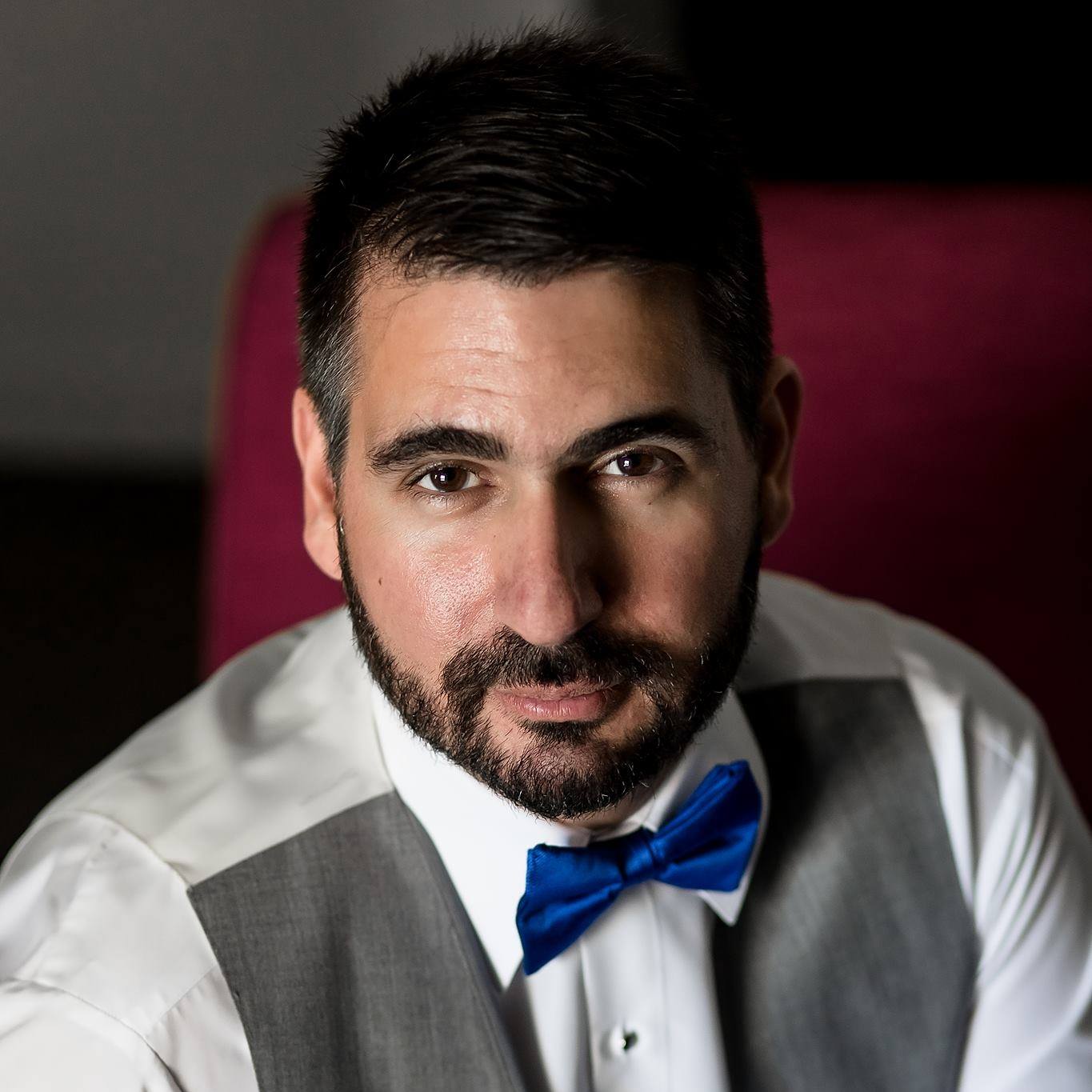
Chad Ghalamzan – Host
Chad Ghalamzan is a computer engineer with over two decades of experience in sales and marketing for the simulation and test industry. He co-hosts the Engineer Innovation podcast and creates content for Siemens Digital Industries Software. He’s tired of people calling him ChadGPT.
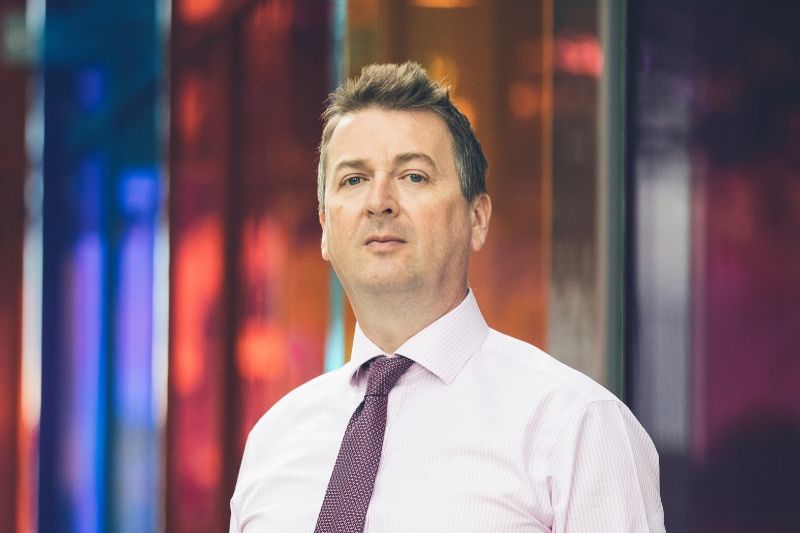
Giampiero Testoni
Mark Price, graduated from Queen’s University Belfast with a degree in Aeronautical Engineering and a Masters in Engineering Computation. He later returned to QUB to undertake his PhD in the School of Mechanical Engineering. Today he is a Professor of Aeronautics at Queen’s University Belfast and Research Initiative Co-Founder at Biohaviour.
Take a listen to a previous episode of the Engineer Innovation Podcast: Engineer Innovation: Generative AI Doesn’t Care About Your Ego with Joanna Peña-Bickley on Apple Podcasts
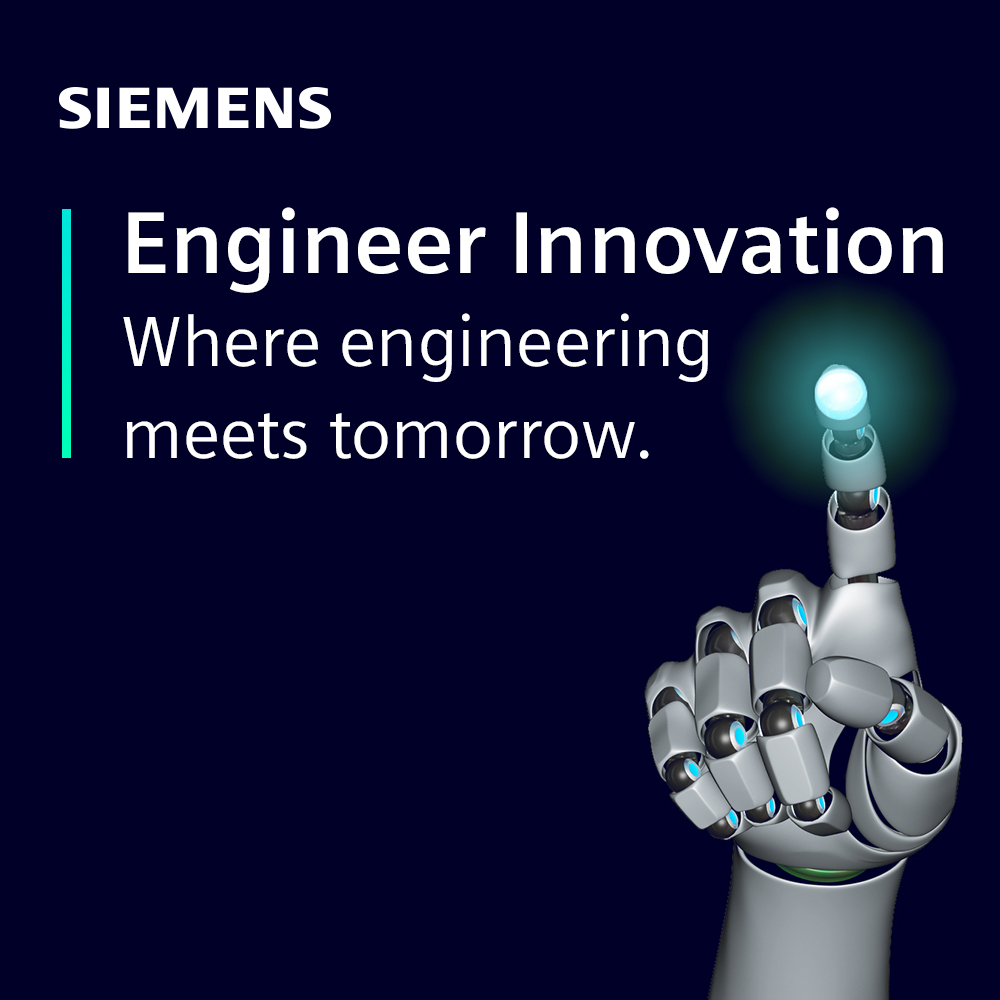
Engineer Innovation Podcast
A podcast series for engineers by engineers, Engineer Innovation focuses on how simulation and testing can help you drive innovation into your products and deliver the products of tomorrow, today.
